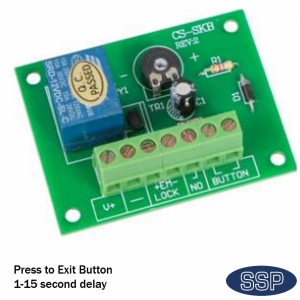- Jan 23, 2022
- 48
- 3
- 83
- If you're a qualified, trainee, or retired electrician - Which country is it that your work will be / is / was aimed at?
- United Kingdom
- What type of forum member are you?
- DIY or Homeowner (Perhaps seeking pro advice, or an electrician)
Our old Friedland chime all too often now emits a only faint "ding"- because the person at the door (usually a delivery driver) just "dabs" at the button.
It works from three buttons:-
Outside of porch; inner front door (the outer front door when the house was built); back door.
The buttons and the chime are in fine working order. Provided a button is pushed decisively, not hesitantly, and held In for at least a couple of seconds, the chime sounds really loud and clear. We can hear it from anywhere in the house.
But we keep missing deliveries when we don't hear a single feeble "ding, and have to rely on a calling card being left to know that a delivery has been attempted - and where the (usually) parcel is.
The chime runs from a Bakelite-cased transformer supplied by a 6 Amp lighting circuit, so the supply is almost certainly ULV AC. I seem to remember that it is 20 V (so it may be a tiny bit less now that we are supposedly on 230 mains voltage),
Is there a button with a damped return spring action which keeps the circuit closed for a short time if the button is released too quickly? (I haven't been able to find one.)
An American video shows fitting a diode across the bell push terminals. That seems to do the trick (how?), but for DC only.
Other suggestions involve a relay with a timer which keeps the output on for a chosen time after the push is released. But, again, this would be for a DC supply only, wouldn't it?
Suggestions would be warmly welcomed. The chimes are melodious, as well as loud. They are far more pleasant acoustically than my neighbour's electronic chime, so I don't want to scrap the Friedland unit and replace it by a wireless device which, at least in my neighbour's house, is visually intrusive - as well as out of character with our interior. That is a lesser consideration, but certainly is a consideration if an electronic device does not give such a smashing sound as our old chime!
I could replace the old transformer with one which rectifies as well as transforms, but the chimes unit is presumably for AC, isn't it? If that proposal would allow the chime to work OK I could try the American idea with a diode. However, I'm curious to know how shorting out one side of the DC circuit to the other side makes the bell stay on for a short time after the push is released.
It works from three buttons:-
Outside of porch; inner front door (the outer front door when the house was built); back door.
The buttons and the chime are in fine working order. Provided a button is pushed decisively, not hesitantly, and held In for at least a couple of seconds, the chime sounds really loud and clear. We can hear it from anywhere in the house.
But we keep missing deliveries when we don't hear a single feeble "ding, and have to rely on a calling card being left to know that a delivery has been attempted - and where the (usually) parcel is.
The chime runs from a Bakelite-cased transformer supplied by a 6 Amp lighting circuit, so the supply is almost certainly ULV AC. I seem to remember that it is 20 V (so it may be a tiny bit less now that we are supposedly on 230 mains voltage),
Is there a button with a damped return spring action which keeps the circuit closed for a short time if the button is released too quickly? (I haven't been able to find one.)
An American video shows fitting a diode across the bell push terminals. That seems to do the trick (how?), but for DC only.
Other suggestions involve a relay with a timer which keeps the output on for a chosen time after the push is released. But, again, this would be for a DC supply only, wouldn't it?
Suggestions would be warmly welcomed. The chimes are melodious, as well as loud. They are far more pleasant acoustically than my neighbour's electronic chime, so I don't want to scrap the Friedland unit and replace it by a wireless device which, at least in my neighbour's house, is visually intrusive - as well as out of character with our interior. That is a lesser consideration, but certainly is a consideration if an electronic device does not give such a smashing sound as our old chime!
I could replace the old transformer with one which rectifies as well as transforms, but the chimes unit is presumably for AC, isn't it? If that proposal would allow the chime to work OK I could try the American idea with a diode. However, I'm curious to know how shorting out one side of the DC circuit to the other side makes the bell stay on for a short time after the push is released.









